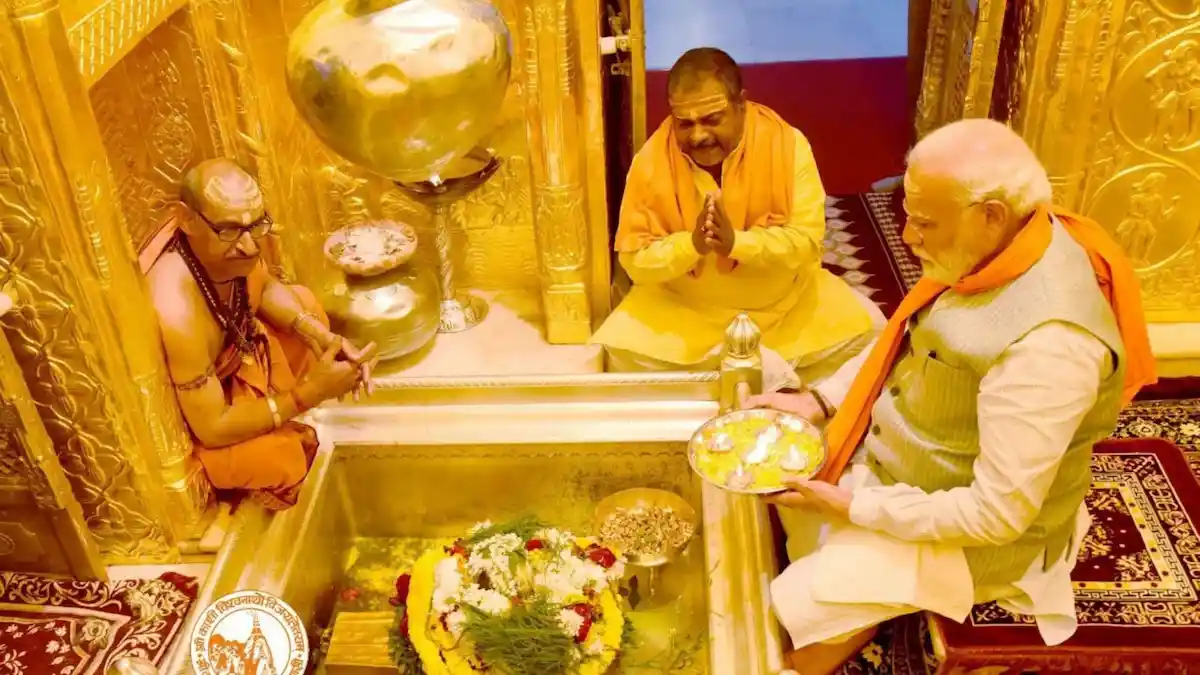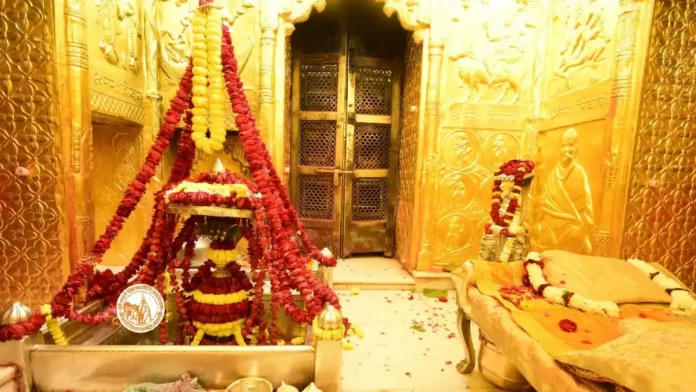On the occasion of Mahashivratri (one of the most important Hindu-Brahmanical festivals), the Kashi Vishwanath Temple in Varanasi was gold-plated with 60 kgs of gold.
The massive gold-plating coincided with Prime Minister Narendra Modi’s visit to the ancient Brahmanical temple on 27 February 2022 ahead of the last few phases of the ongoing Uttar Pradesh assembly elections.
According to officials, an anonymous businessman from South India had donated 60 kgs of gold to the Kashi Vishwanath Temple wanting it to be plated with gold.
The officials told that the inner walls of the temple have already been gold-plated with 37 kgs of gold and the remaining 23 kgs of gold will be utilized in coating the outer walls.
The ultra-rich donor specifically set aside 37 kg for the sanctum sanctorum as this was “equivalent to the weight of” PM Modi’s mother Heeraben.
He reportedly did so to express his gratitude to the PM for undertaking the massive renovation works of the temple, reported Indian express quoting BJP sources.
A special team from Gujarat and Delhi reportedly took over 3 days to complete the task even though the exercise for it began a fortnight ago. Therefore, when Modi visited the temple on 27 February, it was literally glittering with gold.
Kashi Vishwanath Corridor
The renovation of the centuries-old Kashi Vishwanath Brahmanical Temple under the “Shri Kashi Vishwanath Dham Project” or the Kashi Vishwanath Corridor has been a pet project of Prime Minister Narendra Modi.
Modi inaugurated the grand corridor and the renovated Brahmanical temple in an extravagant ceremony on 13 December 2021 terming it to be “a historic day”.
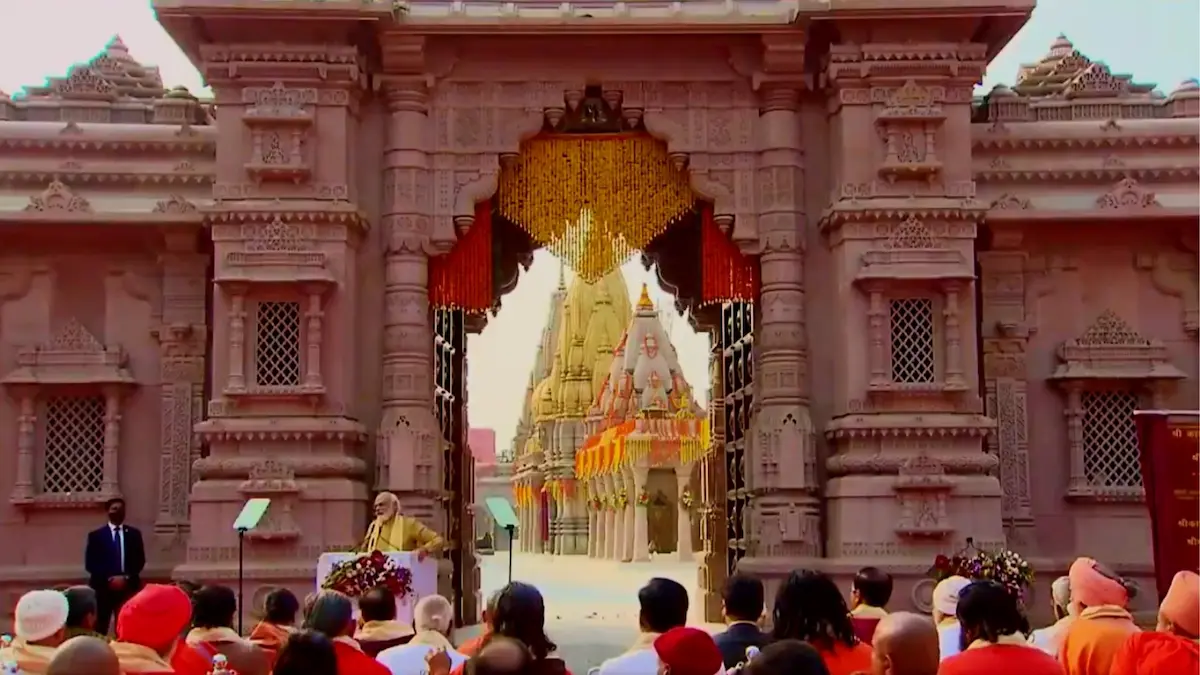
According to the Indian Express, the government had sanctioned a whooping sum of Rs 800 crores for this dream project of PM Modi to restore the ancient glory of the Brahmanical temple.
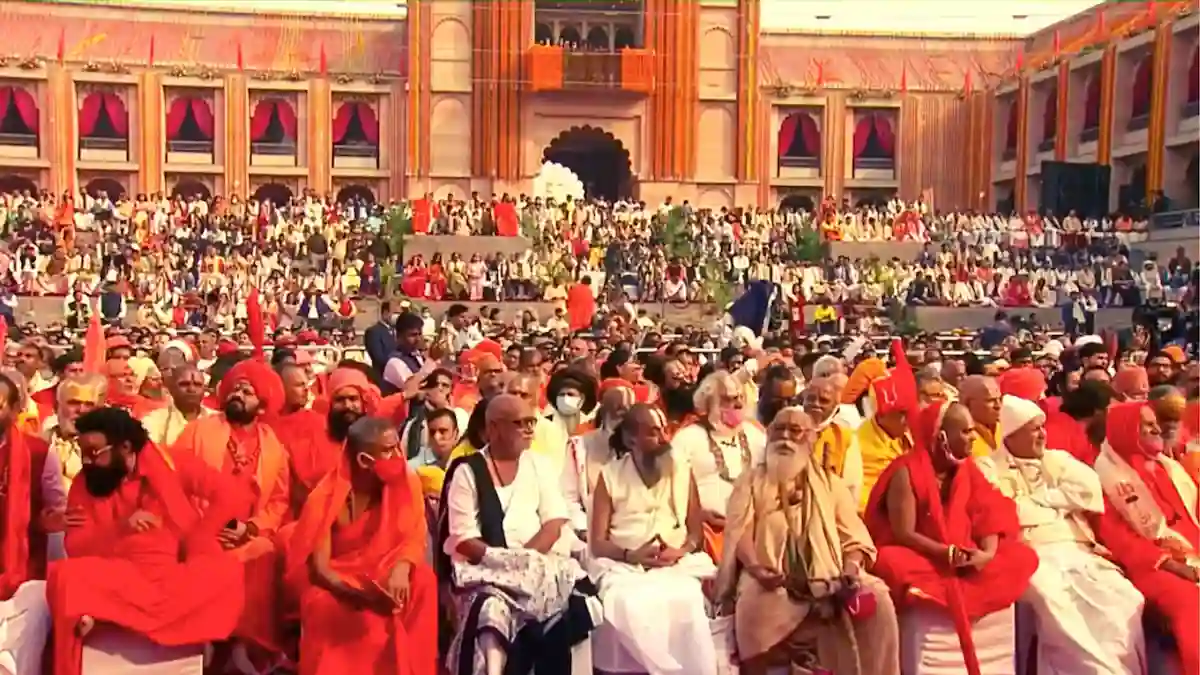
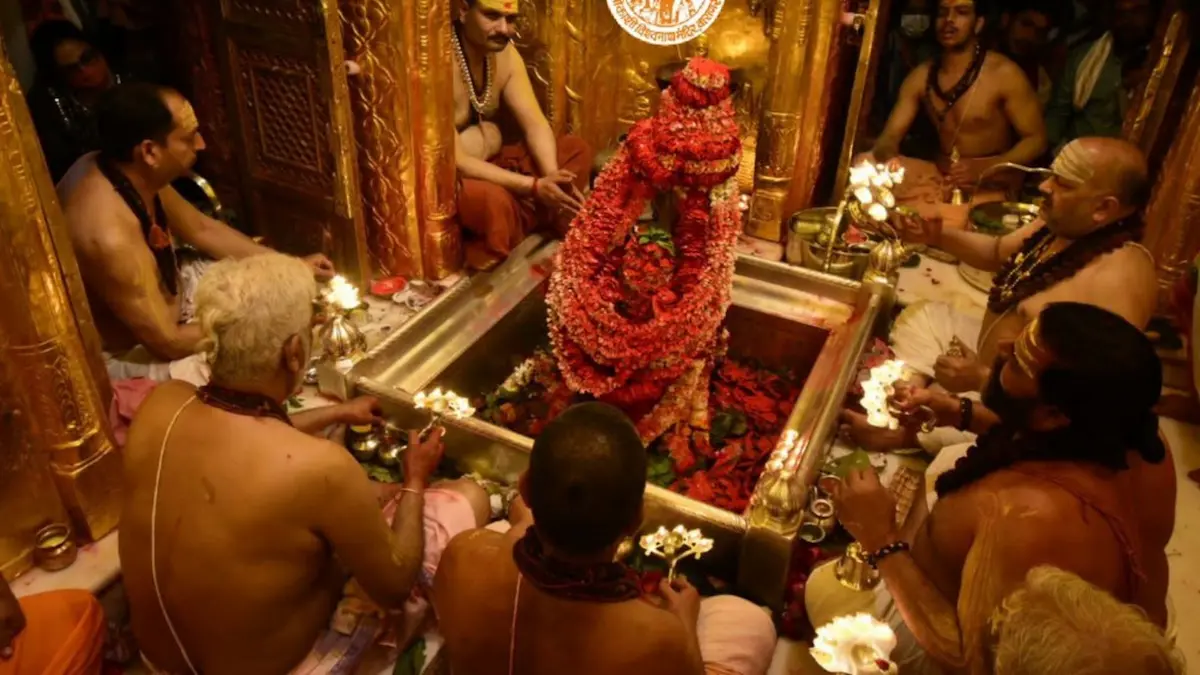
Brief History of the Kashi Vishwanath Temple
The Kashi Vishwanath temple is an age-old Hindu-Brahmanical place of worship in Varanasi in the Uttar Pradesh State of India.
This temple is dedicated to Lord Shiva also called the God of destruction in Hindu-Brahmin mythology.
Standing on the western bank of the Ganga river it is one of the twelve Jyotirlingas i.e. the holiest of Shiva temples.
There are various legends and mythologies about the temple including its ancientness.
The temple was destroyed many times during the medieval period when Muslim rule prevailed in large parts of India. But Brahmins were able to rebuild it again.
It was first demolished in 1194 AD on the instructions of Emperor Qutb al-Din Aibak who also happens to be the first Muslim and Slave ruler of India.
He also got constructed a mosque at the site of the temple and named it the “Razia Mosque”.
However, the Brahmins with the help of rich Hindu merchants rebuilt the temple on nearby land in 1230 AD.
The rebuilt temple was demolished again first by the Sultans of Jaunpur and subsequently by the Lodhi Empire.
When Brahmins boycotted the New Temple
Over a few centuries later, Raja Man Singh and then Raja Todar Mal who were both vassals of the Mughal Emperor Akbar rebuilt the temple at its original site in 1585 AD.
Interestingly, however, the orthodox Brahmins of Benaras initially boycotted the newly built temple saying the Rajput Kings were unworthy to build Hindu temples as they were the relatives of the Muslim rulers.
For the unversed, many Hindu Rajput rulers of Rajasthan had by then entered into marital relations with the Mughals.
The most discussed demolition of the Kashi Vishwanath temple occurred in 1669 AD when Mughal Emperor Aurangzeb ordered its destruction.
After the temple was demolished, the Emperor got built a simple Gyanvapi Mosque (meaning the abode of knowledge) at the same site.
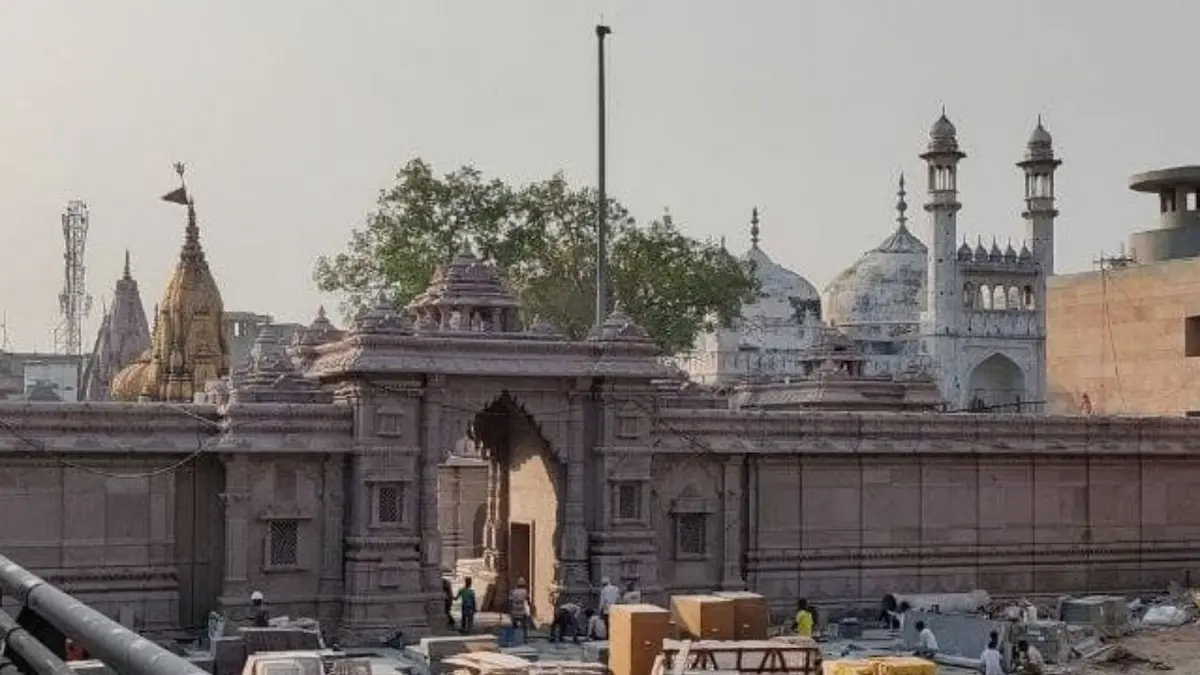
Reconstruction by Ahilyabai Holkar
In the 18th century, several Rajput and Brahmin rulers tried to rebuild the Kashi Vishwanath Temple its original site now occupied by the Mughal Mosque.
However, they failed due to stiff opposition from the local Muslims and rulers of the area, especially the Nawabs of Awadh.
Consequently, Ahilyabai Holkar funded the rebuilding of the temple adjacent to the Gyanwapi Mosque.
She was the daughter-in-law of a famous Brahmin commander Malhar Rao in the Maratha-Peshwa Empire.
A few years later the famous Sikh ruler Maharaja Ranjit Singh decked the temple dome with over 1000 Kg of gold.
